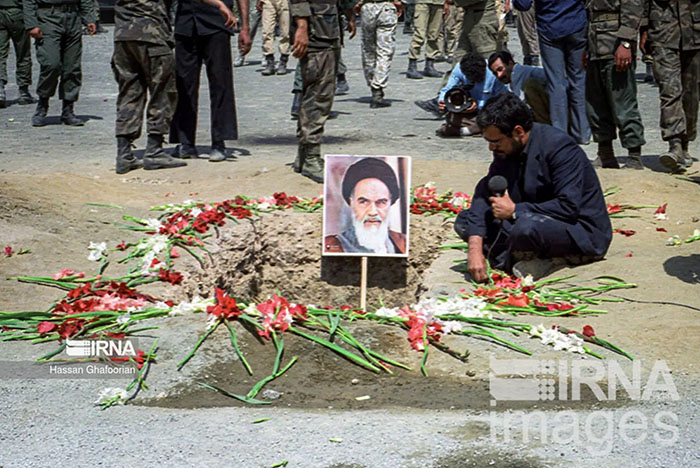The War Within: Elimination of Allies
Khomeini’s rise to power was built upon a fragile coalition of Marxists, liberals, nationalists, bazaaris, and Islamists. However, once in power, he dismantled this coalition. The National Democratic Front, the Provisional Government, and eventually even President Banisadr were sidelined or ousted.
The MeK, once allied with the revolution, became enemies of the state. Thousands of MeK members were killed or imprisoned. In 1988, toward the end of the Iran–Iraq War, Khomeini issued a fatwa leading to the mass execution of thousands of political prisoners, many of them MeK affiliates or leftists. Estimates vary, but between 2,800 and 5,000 were executed in a matter of months.
These purges established a new order: a state tightly controlled by clerics and conservative allies, with dissent violently suppressed and diversity of thought systematically erased.
Legacy and Contradictions
Khomeini’s death in June 1989 marked the end of a decade defined by transformation, suffering, and contradiction. He left behind a complex legacy: a nation free from monarchy but trapped in a new form of authoritarianism. He had delivered on his promise to Islamicize the state, but at the cost of freedoms and prosperity.
Women’s rights saw both progress and repression. The economy suffered, but religious values were entrenched. Minorities and dissidents faced persecution, while others found moral clarity and communal belonging in the new Islamic framework.
Above all, life under Khomeini was defined by a radical reimagining of what it meant to be Iranian—an identity that became tied to religion, sacrifice, and submission to clerical authority. To some, he was a savior; to others, a tyrant. For the Iranian people, his rule remains one of the most transformative and contested periods in modern history.

